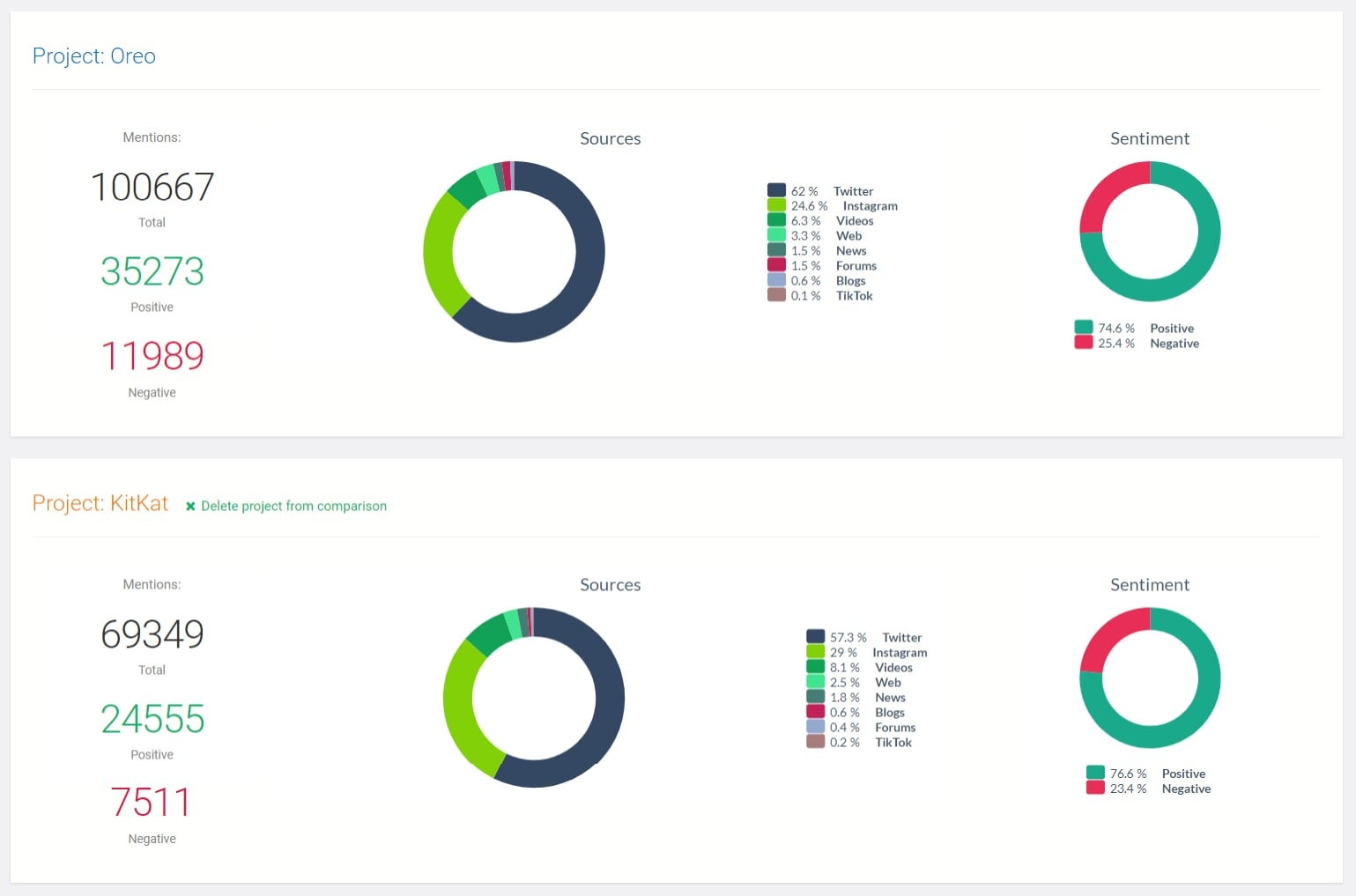In today’s digital age, social media platforms have become an integral part of our lives. With millions of users expressing their thoughts, opinions, and emotions online, analyzing social media sentiment has gained significant importance. Sentiment analysis, also known as opinion mining, is the process of extracting and understanding emotions, attitudes, and opinions from text data. In this article, we will explore the world of sentiment analysis on social media, its techniques, applications, and future trends.
Importance of Sentiment Analysis on Social Media

Social media platforms, such as Twitter, Facebook, and Instagram, provide a rich source of user-generated content that reflects public sentiment. Analyzing social media sentiments helps businesses understand customer satisfaction, identify emerging trends, and tailor their marketing strategies accordingly. It also enables them to respond promptly to customer feedback and manage their online reputation effectively.
Challenges in Analyzing Social Media Sentiments
Analyzing sentiments on social media poses several challenges due to the unique characteristics of the data. Some of these challenges include the brevity of the text, the presence of slang and emojis, context-dependent expressions, and the high volume of data generated in real-time. Overcoming these challenges requires sophisticated algorithms and techniques.
Techniques and Approaches for Social Media Sentiment Analysis
There are various techniques and approaches used for social media sentiment analysis. Let’s explore some of the commonly employed methods:
Rule-based Approaches
-
- Rule-based approaches involve defining a set of predefined rules or patterns to identify sentiment-bearing words and phrases. These rules can be based on lexical resources, such as sentiment lexicons or dictionaries. While rule-based approaches are relatively simple, they may struggle with handling sarcasm, irony, and contextual nuances.
Machine Learning Approaches
-
- Machine learning approaches use algorithms to train models on labeled data, enabling them to automatically learn patterns and make predictions on unseen data. Supervised learning algorithms, such as Support Vector Machines (SVM) and Naive Bayes, are commonly used for sentiment classification. These approaches can handle complex language structures and are more adaptable to different domains.
Hybrid Approaches
-
- Hybrid approaches combine rule-based and machine-learning techniques to leverage their respective strengths. By using rule-based methods to preprocess data and extract features, and then applying machine learning algorithms for sentiment classification, hybrid approaches aim to improve accuracy and handle domain-specific challenges effectively.
Data Collection and Preprocessing for Sentiment Analysis
To perform sentiment analysis on social media, it is crucial to gather relevant data and preprocess it appropriately. Let’s explore the key steps involved:
Gathering Social Media Data
-
- Social media data can be collected using APIs provided by platforms like Twitter, Facebook, or Instagram. These APIs allow access to real-time streams of posts, comments, and tweets. Alternatively, web scraping techniques can be employed to collect data from various sources.
Cleaning and Preparing the Data
-
- Social media data often contains noise, such as hashtags, mentions, URLs, and emojis, which can impact the accuracy of sentiment analysis. Cleaning the data involves removing irrelevant information, normalizing text, handling misspellings, and addressing tokenization and stemming. Preparing the data ensures it is in a suitable format for analysis.
Feature Extraction and Sentiment Classification

Once the data is prepared, the next step is to extract relevant features and classify the sentiment. Let’s discuss these steps in detail:
Feature Selection
-
- Feature selection involves identifying the most informative aspects of the text that can help determine sentiment. These features can include words, n-grams, parts of speech, syntactic patterns, or even sentiment-specific lexicons. Choosing the right features is critical for accurate sentiment analysis.
Sentiment Classification Algorithms
-
- Several machine learning algorithms can be used for sentiment classification, including logistic regression, decision trees, random forests, and deep learning models like recurrent neural networks (RNNs) or transformers. These algorithms learn from the labeled data to predict sentiment labels for new, unseen text.
Sentiment Analysis Tools and Platforms
To simplify the process of sentiment analysis, there are various tools and platforms available. These tools offer pre-built models, APIs, and user-friendly interfaces for analyzing sentiments on social media. Let’s explore some popular options:
Open-Source Tools
-
- Open-source tools like NLTK (Natural Language Toolkit), spaCy, and sci-kit-learn provide libraries and modules for sentiment analysis. These tools offer a wide range of functionalities, from data preprocessing to feature extraction and model training.
Commercial Platforms
-
- Several commercial sentiment analysis platforms, such as Brandwatch, Hootsuite Insights, and AIM Insights, provide advanced sentiment analysis capabilities. These platforms often integrate with social media APIs, offering real-time monitoring, sentiment scoring, and visualization features.
Applications of Social Media Sentiment Analysis
Social media sentiment analysis has numerous applications across various industries. Let’s explore some of the key applications:
Brand Monitoring and Reputation Management
-
- By analyzing social media sentiments, businesses can monitor their brand’s online reputation and track customer sentiment towards their products or services. This information helps them identify potential issues, engage with customers, and make data-driven decisions to improve their brand perception.
Customer Feedback and Market Research
-
- Sentiment analysis enables businesses to gain insights from customer feedback on social media platforms. By understanding customer sentiments, preferences, and pain points, companies can enhance their products, tailor marketing campaigns, and identify emerging market trends.
Political Sentiment Analysis
-
- Social media sentiment analysis is also utilized in political campaigns and public opinion analysis. By analyzing sentiments expressed on social media platforms, politicians and policymakers can gauge public sentiment, track political trends, and make informed decisions.
Crisis Management
-
- During a crisis or a public relations issue, sentiment analysis can help organizations assess public sentiment, identify potential risks, and monitor the effectiveness of their crisis management strategies. This allows them to respond promptly and mitigate any negative impact on their brand.
Limitations and Ethical Considerations in Social Media Sentiment Analysis
While social media sentiment analysis offers valuable insights, it also has limitations and ethical considerations that need to be addressed:
Bias and Misinterpretation of Sentiments
-
- Sentiment analysis models can be biased due to the biases present in training data or the development process. Biased models may misinterpret sentiments, leading to inaccurate results or unfair decisions. It is crucial to address bias and continuously evaluate and improve the models’ performance.
Privacy and Data Protection
-
- Analyzing social media sentiments involves handling large amounts of user-generated data. Respecting user privacy, obtaining necessary permissions, and adhering to data protection regulations, such as GDPR, are essential to maintain ethical standards in sentiment analysis.
Transparency and Accountability
-
- Transparency in sentiment analysis methodologies and algorithms is crucial. Users should be aware of how their data is used, and organizations should be accountable for the decisions and actions based on sentiment analysis results. Transparent practices build trust and ensure the responsible use of sentiment analysis techniques.
Future Trends and Developments in Sentiment Analysis
As technology advances, sentiment analysis on social media continues to evolve. Some of the future trends and developments in this field include:
-
- Integration of sentiment analysis with other NLP tasks, such as named entity recognition and sentiment-specific topic modeling.
- Advanced deep learning architectures, like transformer-based models, for improved sentiment classification.
- Cross-lingual sentiment analysis to analyze sentiments in multiple languages.
- Emotion detection and sentiment analysis for visual content, such as images and videos.
Case Study: Enhancing Brand Strategy through Social Media Sentiment Analysis
A business specializing in home decor was struggling with their customer’s feedback across social media. With the increase in the need for more social media insights, to work on enhancing the performance based on real-time data. So they decided to doubt the social media sentiment analysis tool, to provide them with the needed insights.
Objectives
- Understanding customer’s true opinions about the products and services that are provided by the business
- Working on improving the brand reputation based on the real-time changes across the different media.
- Identify the market trends, and find ways to use them for better marketing strategies.
Approach
- Data Collection: the company worked on collecting data from the different social media platforms for over six months. Categorize these data into Customer reviews, Product-related posts, Comments, and direct messages.
- Data Preprocessing: the collected data passed over the cleaning phase. To exclude any unnecessary information like emojis, and unrelated URLs.
- Sentiment Analysis Implementation: the company relayed some approaches for sentiment analysis. Including Machine Learning Models, and Deep Learning Models.
- Sentiment Scoring and Visualization: the results were visualized in different dashboards. Presenting sentiment trends, emerging themes, and comparative analysis by platform and time frame.
Key Findings
- Positive Sentiments: the customer service and the product quality had very positive reviews and feedback. Also, the seasonal campaigns received very positive feedback, especially during the holiday season.
- Negative Sentiments: there were a lot of complaints about the delivery services and delays in receiving orders. Also, customers expressed dissatisfaction with limited return policies
- Emerging Trends: there was a growing interest by the target customers about eco-friendly products.
Actions Taken
- Improved Operations: the company connected to its delivery company to work on solving the delivery problems.
- Personalized Marketing: the marketing campaigns started to be about more high-quality and eco-friendly products.
- Focused Engagement: the social media strategies were built to be more attractive and engaging for the customers.
- Enhanced Customer Policies: the company readjusted its return policies, based on the customer’s requirements.
Results
- Customer Satisfaction: the positive sentiment score was increased by 20% within 3 months after applying the strategies.
- Brand Perception: the customer feedback about the delivery services was enhanced. Leading to a 25% reduction in negative sentiment.
- Sales Growth: a 15% increase in sales was observed based on the target campaigns on eco-friendly products.
Challenges and Learnings
- Handling Sarcasm: the sarcasm in the language was challenging to analyze, despite the advanced model.
- Privacy Concerns: keeping the data privacy concern during the collection of the data and insights.
Conclusion
Sentiment analysis provides valuable insights into customer opinions, brand reputation, and market trends. By employing various techniques, such as rule-based and machine-learning approaches, businesses can extract sentiments from social media data and make informed decisions. However, it is essential to address the challenges, limitations, and ethical considerations associated with sentiment analysis to ensure accurate and responsible usage.
If you want to experience the power of sentiment analysis in action, we recommend requesting a demo from AIM Technologies. Their advanced sentiment analysis platform can help you unlock valuable insights from social media data and drive data-driven decision-making. Don’t miss out on the opportunity to enhance your brand’s reputation and stay ahead of the competition.
FAQs
How accurate is sentiment analysis on social media?
Sentiment analysis on social media can achieve reasonably accurate results, but it is not 100% perfect. The accuracy depends on various factors, including the quality of training data, the chosen algorithms, and the complexity of the text. Continuous evaluation and improvement are necessary to enhance the accuracy of sentiment analysis models.
Can sentiment analysis detect sarcasm and irony on social media?
While sentiment analysis algorithms have improved over time, detecting sarcasm and irony remains a challenge. These linguistic nuances often require a deeper understanding of context and cultural references. Rule-based approaches and contextual modeling techniques are being developed to address this issue.
How can businesses benefit from social media sentiment analysis?
Social media sentiment analysis offers several benefits to businesses. It helps monitor brand reputation, track customer satisfaction, identify emerging trends, and make data-driven decisions. By analyzing sentiments, businesses can improve their products, tailor marketing strategies, and enhance customer engagement.
What are some popular tools for social media sentiment analysis?
There are several popular tools and platforms available for social media sentiment analysis. Some of them include Brandwatch, Hootsuite Insights, Aim Technologies, NLTK, spaCy, and sci-kit-learn. These tools offer a range of functionalities, from data collection and preprocessing to sentiment scoring and visualization.
Is sentiment analysis on social media ethically sound?
Sentiment analysis requires ethical considerations, especially regarding user privacy, bias, and transparency. It is crucial to handle user data responsibly, address biases in models, and ensure transparency in the analysis process. Adhering to privacy regulations and industry best practices is essential to maintain ethical standards.




